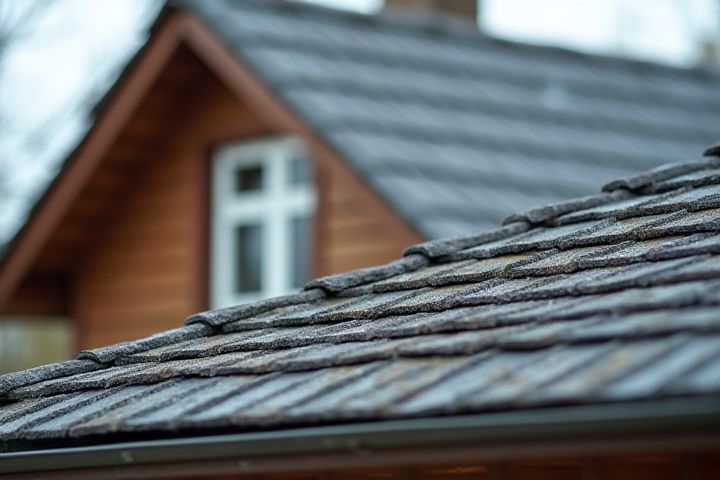
Regular roof maintenance is essential to prolong the lifespan of your home's roofing materials and prevent costly repairs. Inspect your roof at least twice a year, especially following severe weather events, to identify potential issues such as missing shingles, leaks, or debris accumulation. Cleaning out gutters and downspouts can prevent water damage and ensure proper drainage, while checking for signs of moss or algae growth helps maintain your roof's integrity. If you spot any damage, consider hiring a qualified roofing professional for repairs or replacements, as they can assess the condition of flashing, underlayment, and ventilation systems. By investing time in these maintenance steps, you can safeguard your home's structure and preserve its value.
How To House Roof Maintenance
Regular inspections for damage
Regular inspections of your roof, ideally conducted biannually, are crucial for identifying potential damage before it escalates. Look for signs of wear such as missing shingles, cracks, or rusted flashing, which can lead to leaks and costly repairs. Inspect gutters and downspouts to ensure they are free of debris, promoting proper drainage and preventing water buildup. By investing just a few hours each year in thorough inspections, you can significantly extend your roof's lifespan and protect your home's structure.
Clean gutters and downspouts
Regularly cleaning your gutters and downspouts is crucial for effective roof maintenance and preventing water damage. Clogged gutters can lead to overflow, causing water to seep under shingles and damage the roofing structure. Use a sturdy ladder to safely access your gutters, and clear out leaves, twigs, and debris, ensuring smooth water flow. Installing gutter guards can further minimize buildup, making maintenance easier and enhancing the longevity of your roof.
Trim overhanging branches
Trim overhanging branches regularly to prevent damage to your roof and reduce debris accumulation. Overhanging tree limbs can scrape against roofing materials, leading to wear and potential leaks. Ensure the branches are at least a few feet away from your roof to allow for proper airflow and prevent moisture buildup. Regular inspections and timely trimming can prolong the life of your roof while enhancing its appearance.
Check for moss and algae growth
Regularly inspect your roof for moss and algae growth, as these can trap moisture and lead to serious damage. Check the north side of your roof and shaded areas, where moss typically thrives, and look for dark stains that may indicate algae. Removing moss and algae not only enhances your home's curb appeal but also extends the lifespan of your roofing materials. Consider using a specialized roof cleaner or hiring a professional to ensure a thorough and safe removal process.
Repair damaged shingles promptly
Repairing damaged shingles promptly is crucial for maintaining the integrity of your roof and preventing leaks. Inspect your roof regularly for cracked, curled, or missing shingles, as these issues can lead to water infiltration and structural damage. Use high-quality roofing sealant or adhesive to secure loose shingles, and replace any that are severely damaged to ensure optimal protection against the elements. You can enhance the lifespan of your roof by addressing these repairs quickly, ultimately saving you money on more extensive repairs in the future.
Inspect for leaks or water damage
Inspect your roof at least twice a year, ideally in spring and fall, for early signs of leaks or water damage. Look for dark stains, peeling paint, or mold, which may indicate moisture intrusion. Using a flashlight, examine the attic or crawl spaces for any signs of water infiltration, particularly around vents, chimneys, and skylights. Document any issues you find and address them promptly to prevent further damage, which could lead to costly repairs down the line.
Seal or caulk around vent pipes
Regular roof maintenance is essential to prolong the lifespan of your home, particularly focusing on sealing or caulking around vent pipes. Inspect the caulk for any signs of deterioration or cracks, as compromised seals can lead to leaks and water damage within your property. Use high-quality silicone or polyurethane caulk to ensure a durable, weather-resistant seal that can withstand extreme temperatures. By maintaining a tight seal around vent pipes, you help protect your home's structural integrity and prevent costly repairs down the line.
Ensure proper attic ventilation
Ensuring proper attic ventilation is crucial for effective house roof maintenance as it regulates temperature and moisture levels, preventing damage to roofing materials. Installing ridge vents or gable vents allows for a continuous flow of air, helping to dissipate heat during summer months while reducing the risk of ice dams in winter. Proper insulation combined with ventilation minimizes energy costs and enhances comfort in your home. Regularly check for obstructions, such as insulation or debris, to maintain optimal airflow and prolong the lifespan of your roof.
Remove debris from the roof
Regularly removing debris from your roof is essential for maintaining its integrity and extending its lifespan. Fallen leaves, branches, and dirt can trap moisture, leading to mold growth and potential leaks. Using a roof rake or a blower makes the process efficient; ensure you work safely and avoid damage to roofing materials. Inspecting for accumulated debris at least twice a year, especially after storms, can help you keep your roof in optimal condition.
Hire professional inspections
Hiring professional inspections for your house roof is essential for maintaining its integrity and longevity. Experts typically recommend scheduling inspections at least twice a year, ideally in the spring and fall, to identify potential issues such as leaks or structural damage early. A professional inspection can cost between $100 to $500, but this investment can save you thousands in repairs by addressing problems proactively. Regular inspections not only enhance safety but also help preserve your property's value, ensuring you make informed decisions regarding necessary repairs or replacements.
